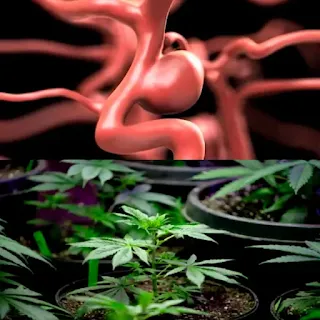Abdominal aortic aneurysm (aneurysm) should be included in the annual medical examination. Because it destroys the lives of many people every year.
Dr. Alexander Myasnikov points out that aortic aneurysm is diagnosed in 10-13 percent of men and 6 percent of women. That is, men are twice as likely to suffer from it. But rupture occurs more often in women than in men.
According to him, the condition can be diagnosed using ultrasound and determining the diameter of the aorta. This condition appears when the renal arteries expand by one and a half times. This criterion depends on age and gender, and a 50 percent increase in the diameter of the aorta is actually considered an aortic aneurysm.
The doctor points out that 80 percent of aneurysm cases do not pose a health risk because they are small.
He explains: “An aneurysm becomes dangerous when its diameter becomes five centimeters or more, or grows by 0.5 cm within 6 months.”
Smoking is considered the most dangerous factor in the development of abdominal aortic aneurysm. The relationship between smoking and the disease is stronger than between smoking and lung cancer.
He says: “A man who smokes or has previously smoked must undergo this examination and undergo medical monitoring to determine whether the dilatation is developing or not. This procedure is performed every six months for three years.”
If the aneurysm is found to be developing, it must be removed surgically, because the risk of its rupture increases greatly.
Scientists reveal the secret of cannabis’ connection to stimulating appetite for snacks!
Neuroscientists at Washington State University believe they have discovered the secret to how cannabis affects users' appetites and prompts them to snack.
They conducted the first experiment of its kind in mice, looking at how cannabis affects the real-time activity of brain areas that control appetite.
The findings are supported by an abundance of anecdotes and rigorous human studies, all of which indicate that smoking or ingesting cannabis can trigger cravings and have you heading to the pantry or refrigerator in no time.
However, while recreational cannabis is commonly used to treat appetite problems, such as those caused by eating disorders or chemotherapy, scientists know little about the mechanisms behind this effect.
In recent years, several studies have pointed to the hypothalamus as an area of interest. This part of the brain is located deep within the organ and acts as a kind of “control coordination center” for the body, keeping the hormones and nervous system in balance.
At the bottom of the hypothalamus, before it connects to a pea-sized gland responsible for producing hormones (including those associated with hunger), there is a group of neurons called the arcuate nucleus, or ARC. This part of the hypothalamus is thought to regulate feeding behavior and metabolism.
Previously, researchers used rodents to show that exposure to cannabis affects gene expression in the ARC.
Now, they zoomed in even further and saw the activity of a small group of neurons in the ARC that contain cannabinoid receptors.
Sure enough, when the mice were exposed to vaporized cannabis, these neurons, called AgRP neurons, were inhibited.
Neuroscientist John Davis explains: “When cannabis is given to mice, neurons that would normally be inactive become active. There is something important that happens in the hypothalamus after smoking cannabis.”
Specifically, Davis and his colleagues found that exposure to cannabis activates type I cannabinoid receptors on AgRP neurons, and these receptors prevent neurons from receiving “stop” messages from other neurons.
In this setting, AgRP neurons have been linked to increased feeding among laboratory mice.
But when the scientists inhibited this group of neurons, cannabis exposure no longer stimulated the animals' hunger.
The results suggest that this subset of neurons in the hypothalamus plays an important role in “snacking.”
The study was published in Scientific Reports.

